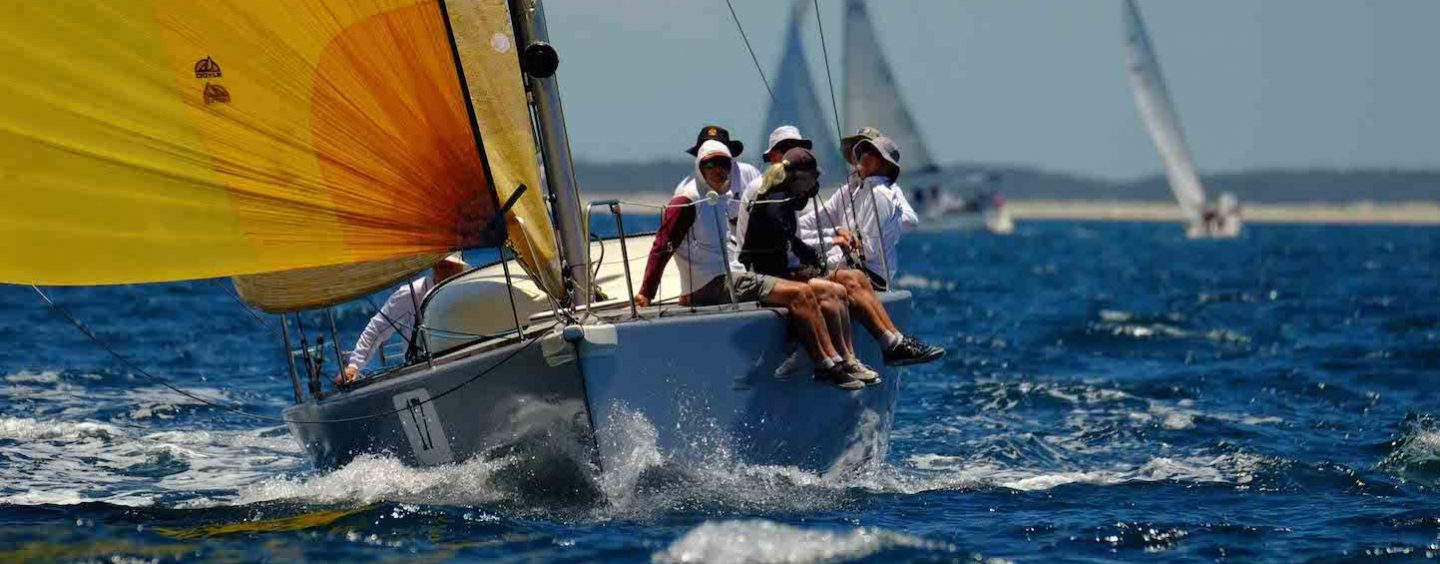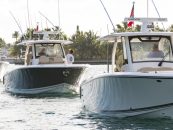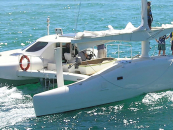Before colonial sailing was introduced in Australia, the people of Torres Strait Islands were already using large double outriggers with large sails, which have been part of their culture for over 2,000 years. The English fleet who sighted these outriggers easily acknowledged the speed and capabilities of these sailing vessels.
Although the first colonial races involved the English ships’ rowing workboats back in the 1830s, the regattas grew to include sailing races, particularly in Tasmania and Sydney. From then on, other states and territories followed, placing Australia on the map of global sport sailing – from the first colonial sailing on cutters and long boats out on Sydney Harbour and up the Parramatta River held soon after the arrival of the First Fleet in 1788, to the couta boats of Victoria and the ketches of Tasmania in the 1800s, to racing boats in the America’s Cup, to earning Olympic medals.
Today, sailing remains very popular among sports enthusiasts, as well as among the active cruising communities all over the country and the world. A plethora of ocean races happen all-year round globally. It cannot be said, then, that the interest in sport sailing is disappearing.
In 2017, Australian Sailing, the national sporting organisation (NSO) for sailing and the peak body for recreational boating at clubs in Australia, released the National Sailing Participation Census. Clubs and class associations were the main sources of data, although schools with sailing programs were also considered in the census.
Here are the highlights of the 2017 Census:
Total number of regular sailing participants in Australia: 175,871
Of this total: 70.3% were male and 29.7% were female; 18.3% were aged 5-12 years, 16.1% aged 13-18 years, and 65.7% aged 19 years and over.
NSW had the greatest sailing participation with 48,304, followed by Victoria with 38,703, and Queensland with 35,654.
The census also reported 11,563 promotional experiences in sailing in 2017. These experiences encompass regattas, discover sailing days, school programs and activities, corporate events, community organisation events, class associations events and once-off activities.
A total of 11,623 people were reported to be involved in voluntary or remunerated support to sailing clubs and class associations. However, the data shows considerable reliance on volunteer contributions to keep operations viable, and to offer competitions and events, with 88.4% (10,269) volunteers, as opposed to only 11.6% (1,354) paid support personnel.
While the sailing participation numbers look promising, the yacht clubs nationwide still have challenges to address. During the Marine 17 Conference, John Lee, CEO of Australian Sailing, presented on how clubs can do better to increase quality participation in sailing. He cited that the future involves the following: a time-poor population, a decline in volunteering, young people seeking thrills, and that chilling out will be a premium. The trends show that “what we play, how and why we play are changing over time”. With people increasingly becoming time-poor, health (rather than competition) is becoming a major driver for participation in sport.
John Lee’s challenge: Sailing is a sport for life, and already enjoyed by older participants. How are the clubs engaging them and encouraging them to bring their friends? The sailing clubs of today have evolved from the traditional into more social and more community-based organisations, that not only embrace the advancement in technologies in sailing, but also offer inclusive, innovative and hands-on sailing experiences for the general public. Through free Discover Sailing days, crewing opportunities, partnerships with schools and sports centres, women-on-water sailing days, sailing pathways for people with disabilities, and corporate and group activities, among others, the opportunities for the public to engage in sailing are not wanting. In fact, the diversity of offerings allows for anyone – from a complete beginner to a high-performance sailor – to engage with and be part of a club.
Club memberships generally range from Full to Social categories. The hope is that Social members who are exposed to the information on club activities and are welcome to be part of them, will eventually move up to become Full members. The Southport Yacht Club (SYC) offer Twilight Sailing for Social members to join in a fun race among members, by crewing for one of the members’ boats. SYC also offer several beginner courses for children and for adults depending on the boat type and skill level. The Royal Queensland Yacht Squadron (RQYS) offer a “Come Sail Our Boats” membership package, which allow non-boat owners to join member boats. RQYS also host competitions among various participating schools from Southeast Queensland, encouraging school communities to engage in friendly sailing competitions.
Aside from club activities, sailing can be enjoyed through cruising. Sailing charters – bareboat or skippered – are readily available all over Australia, and can be very effective in encouraging interest in sailing for families, among friends and colleagues. Clubs can collaborate with local sailing charter operators to come up with projects that can increase participation in sailing, as well as encourage cruising as a recreational activity within the local community.
Social media has also been an effective platform for people to be part of a sailing crew without the pressure of club membership. There are many sailors who are embarking on sailing-for-a-cause projects, such as Poppy Moore who is sailing with Scaramouch for Parkinson’s Disease awareness, and always require volunteers to be part of their crew during particular legs in their itineraries. Yacht clubs can host and sponsor these cruising sailors, and benefit from engaging the local communities in welcoming these sailors. Young people lean towards more cause-oriented activities, and will be attracted to participate in programs that relate to their personal advocacies.
International programs that allow paying participants to be trained as crew of racing sailboats, such as Clipper Round the World, are also helpful activities that can drive long-term participation in the sport.
Lee also posed the challenge of the evolving nature of sport in today’s society. Any sport is traditionally and naturally a competitive activity. But in current times, the idea of sport has become less of a competition, and has become more of an individual health- and wellness-oriented activity. Rowing and paddling, for example, have taken a less sporty role in communities. Many people join rowing clubs for the sole purpose of socialising and keeping fit at the same time. Sailing can catch on this trend by shifting concepts from the technical aspects of competitive sailing to the health benefits of engaging the body and mind in this particular activity.
Australians are recognised for being natural sporting sailors with their mastery of the harsh conditions of wind and seas. However, the winds have changed and our sailing clubs need to entice more participation from the non-sporting population. Without compromising the need to constantly evolve with the technical innovation in sport sailing, sailing groups can definitely use the changing winds of modern society to their advantage by engaging interested individuals in more recreational and meaningful sailing activities that might make them, together with their families and friends, lifelong sailors.
By Roselle Tenefrancia
Cover image by Mitchell Pearson (2018 Bartercard Sail Paradise Series)



























